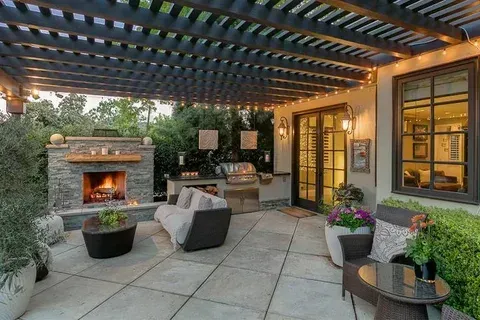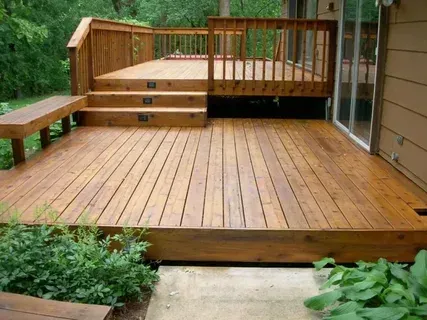How to Prepare Your Property for Fence Installation
How to Prepare Your Property for Fencing Installation?
Your property’s security, privacy, and visual appeal can all be greatly improved by installing a fence. But for a seamless installation and a long-lasting outcome, enough planning is essential. By following the correct procedures prior to installation, you can avoid wasting time, energy, and sometimes even headaches while building a fence for the first time or replacing an old one. The fundamental setup requirements for a successful fencing installation will be guided through by this tutorial.
Define Your Purpose
Establishing the goal of your fence is crucial before you start any physical preparations. Do you want to designate property boundaries, boost security, or enhance privacy? Selecting the ideal fence style, material, and design will be made easier if you know what your objectives are. For seclusion, a fence would need to have solid panels; for decoration, a fence might need to have more detailed patterns.
Check Local Regulations and Obtain Permits
Regarding the fencing installation, the majority of towns have zoning laws and certain rules. Your fence’s height, design, and location may be determined by these guidelines. To comprehend these rules and acquire any required permits, it is imperative that you get in touch with your local government or homeowners organization. There may be fines or your fence being forcibly taken down if you break municipal codes.
Locate Property Lines
Resolving conflicts with neighbors and possible legal problems requires accurate property boundary delineation. For specific information about your boundaries, go to your deed or property survey. You can think about hiring a qualified surveyor to mark the precise lines if you don’t have a recent survey. By doing this, you can make sure your fence is constructed inside your property lines and complies with existing laws.
Consider Utility Lines
Finding any underground utility lines, such as those for gas, water, and electricity, is essential before beginning any digging. A utility line struck during fencing installation might result in major disruptions and provide safety hazards. Make use of a utility locating service or get in touch with your local utility company to label these lines. This service is free in many places and helps guard against unintentional damage.
Plan Your Fence Design
The procedure of installing your fence will go more smoothly if your design is well thought out. Choose the fence’s style, composition, and color. To see the final design, make a thorough sketch or use fence planning software. Any hills or uneven ground should be considered, as these will affect the fence’s construction.
Mark the Fence Line
Mark your property’s intended fence line once you’ve decided on a design. To mark the location of the fence, use stakes, thread, or spray paint. This will assist you in seeing the arrangement and adjusting as needed before the fencing installation process starts. It also helps contractors grasp your goals and specifications.
Clear the Area
Prepare the fencing installation location by removing any obstructions. Clear the area around any current fences, tree stumps, rocks, and other objects that could get in the way of installing the fence. Any overhanging plants or branches that can hinder building should be pruned. Maintaining a clean environment helps to protect your new fence and guarantees a more seamless installation.
Prepare the Ground
An important consideration is the state of the ground on which the fence will be erected. Make sure the soil is sturdy and level. You may need to grade the area in order to enable appropriate fencing installation on slopes or uneven terrain. This could entail shifting soil around to make the surface more level. An effective ground preparation contributes to the fence’s durability and stability.
Gather Necessary Tools and Materials
Make sure you have every instrument and item required for the fencing installation. Posts, panels, concrete, post anchors, screws, and any other hardware unique to your style of fence are included in this. Even though a contractor you hire will provide their own tools, it’s still helpful to know what is needed. Having everything ready before you begin will help to ensure a faster and more efficient procedure.
Install Fence Posts
Installing fence posts is an essential step since they give your fence its structural support. Make sure the post holes are deep enough to provide stability by using a post hole digger to remove the holes. For posts to be securely fastened in place, concrete should usually be used. Make sure the posts are positioned and level with respect to the design of your fence. For a fence to be strong and durable, posts must be installed correctly.
Attach Fence Panels
Attach the fence panels to the posts after they have been firmly placed. This could entail nailing or screwing the panels into place, depending on how your fence is designed. Make sure the panels are level and properly positioned. Take your time to verify dimensions and alignments in order to prevent problems with the final product.
Check for Quality and Stability
Check the overall stability and quality of the structure after the fence panels are mounted. Make sure the panels are fastened firmly and that all of the posts are in place. Check for any holes, crooked edges, or loose fasteners. Before adding the finishing touches, take care of any problems to guarantee a high-quality finished product.
Apply Finishing Touches
After fencing installation, depending on the material, you may need to apply finishing touches such as paint, stain, or sealant. In addition to shielding the fence from wear and weathering, these treatments can improve the fence’s look. To get the greatest effects, apply the product according to the manufacturer’s directions.
Conclusion
Setting up a fence on your property requires a number of critical processes, from goal-setting to upkeep of the completed structure. A seamless installation procedure and a fence that fulfills your requirements and expectations can be guaranteed by adhering to these recommendations. You will have a strong, beautiful fence that adds to the utility and value of your home if you take the time to properly prepare.



